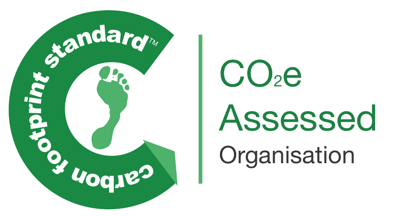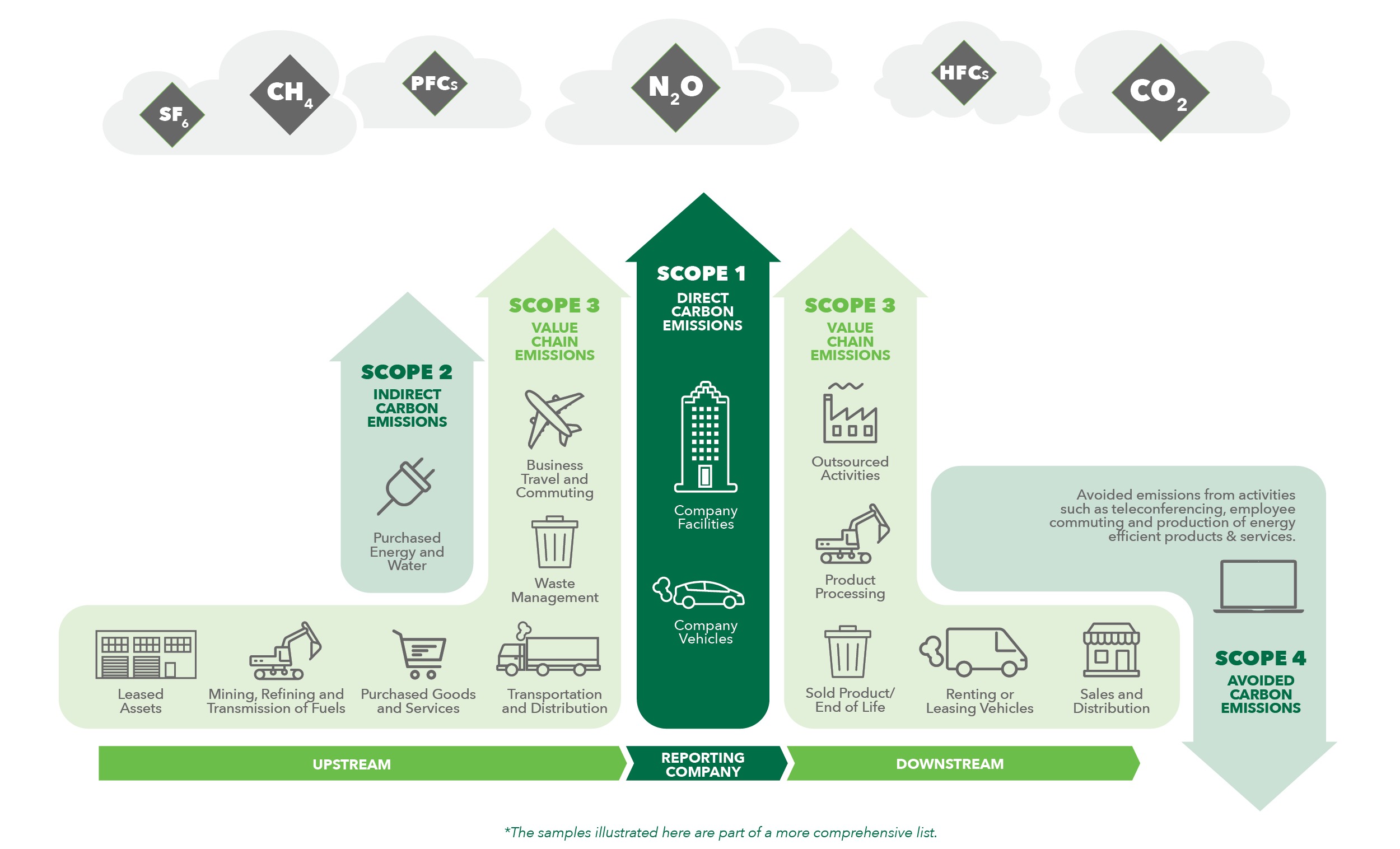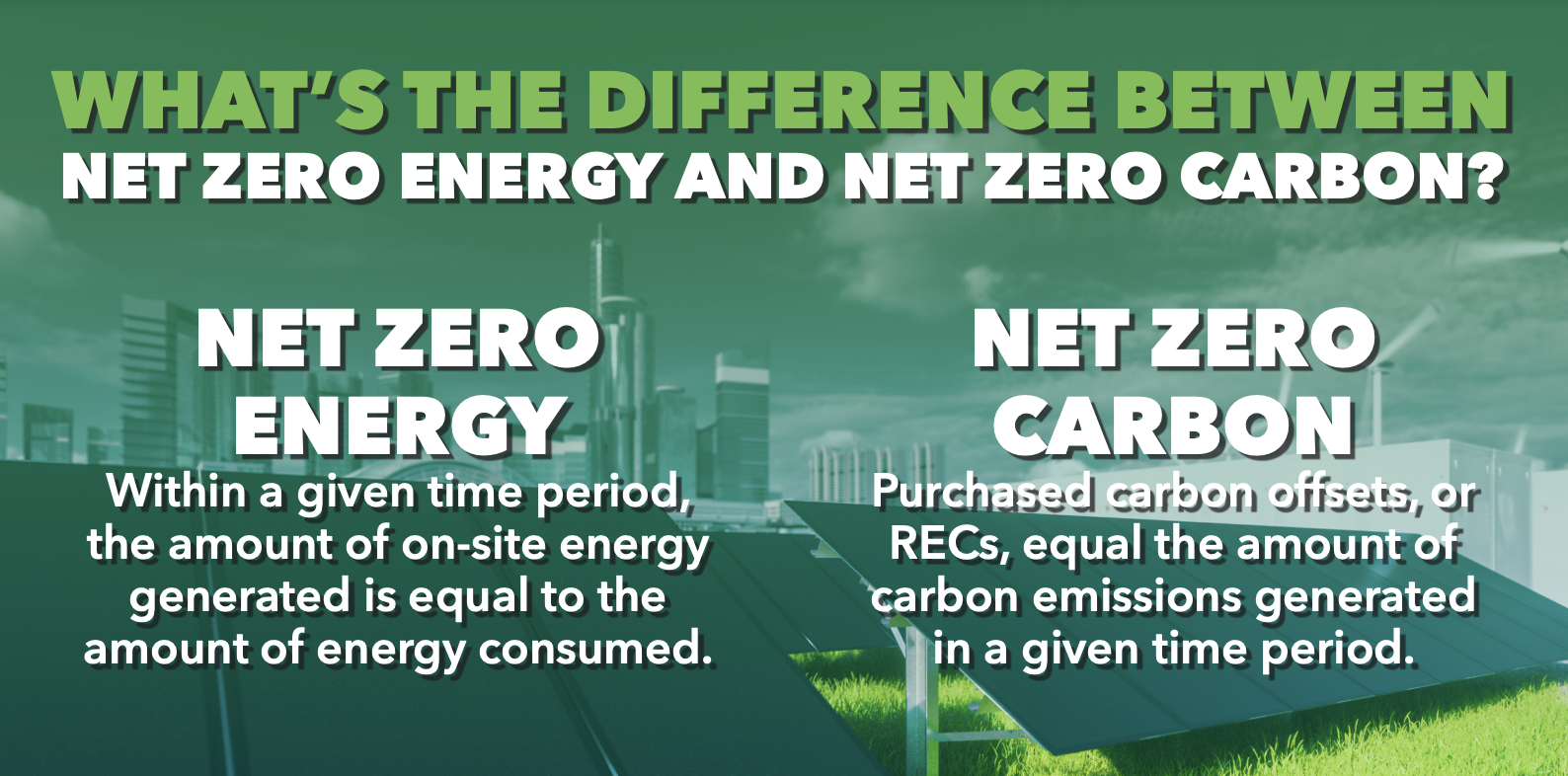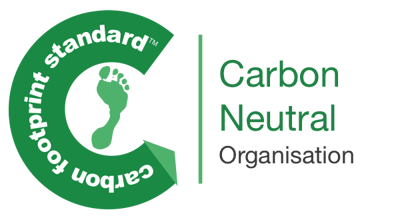Emerald’s core value, Eye of the Tiger, often affords us the opportunity to challenge third-party verifiers about the factual basis or efficacy of rules and regulations. As advocates for our clients, if a sustainable rating system has not yet encountered the project-specific details we present, we are known for our ability to craft documentation to support allowances that benefit our clients carefully. It’s how Big River Steel, the world’s first steel production facility, achieved LEED certification, and how projects like 121 Larchmere demonstrated compliance with alternative transportation credits.
As sustainability consultants, we needed to "Eye of the Tiger" ourselves when it came to greenhouse gas emissions reductions: We had to wrestle with our own company’s profile, the tenants of greenhouse gas emissions reporting standards, and the data we could produce – and stand behind it. Our proven Four Step Process led us to recently complete our first third-party verified greenhouse gas emissions report and to achieve Net Zero Carbon. This is the story of our process, which we hope you will either do for your own company – or ask us to help you do it.
Why Care About Net Zero Carbon?
Because your customers asked you to. Because your employees asked you to. Because your investors or funders asked you to. Because you recognize the link between rising greenhouse gas emissions and climate change. Because you recognize the risk of climate events. Because of the new SEC reporting requirements. Because you want to differentiate your company.
Whether you think achieving Net Zero Carbon is an opportunity, a risk mitigation strategy, an annoyance, or frankly, you haven’t thought about it, there is one universal answer: It is possible to achieve Net Zero Carbon. By achieving Net Zero Carbon, you are definitely taking steps to mitigate risk, and can potentially be a first-mover among your peers.
According to McKinsey & Company, addressing climate risk is an opportunity for anyone who owns real estate, “The climate transition not only creates new responsibilities for real-estate players to both revalue and future-proof their portfolios but also brings opportunities to create fresh sources of value.”
Not a believer in the opportunity angle? There is always the regulatory angle that triggers those focused on risk mitigation: the automotive and aerospace industries, the federal government, other countries, and local building codes may all give reasons to get on the Net Zero Carbon bandwagon. Whether you own or lease real estate, achieving Net Zero Carbon is possible.
Listen & Strategize
We believe in starting any venture by listening and strategizing. Listen to the stakeholders asking you to achieve Net Zero Carbon. Are they your customers? Your investors? Your employees? Your peers? Depending on who or what drives the decisions to explore how to reach Net Zero will define the scope of your first report.
For Emerald, this was a self-imposed goal: Who are we to be advocates for a sustainable future if we are not actively doing our part to offset our own footprint? To that end, we counted up all of our Scope 1 and 2 emissions and some of our Scope 3: those directly caused by our service delivery. Perhaps your first report won’t include Scope 3, or maybe you have many more elements of Scope 1 you need to count than we did. Defining the scopes as they apply to you is step 1.
Also important in this step is clarifying what standard you are reporting since it will influence your strategy. Whether it’s SASB, TCFD, CFS, or CDP, the requirements differ. In this step, you will want to clarify what levels of assurances you need to provide with your report (i.e. if you have mandatory or voluntary reporting requirements). Include any required assurances in your strategy development.
Evaluate & Plan
Once it's clear what needs to be articulated, evaluating current data and planning to gather and track new data is the next step in creating a greenhouse gas emissions report. Because of the work we do, we had several tools and resources already available to us and we built new ones.
One thing is for certain: If you plan to have your emissions report third-party verified as we did, you will need to be able to “show your work” - think back to math class. Just reporting that your company contributed ## Tons of GHG emissions from Scope 1 is not good enough. Be prepared to show the verifiers how you got to that number. Starting with the end in mind means planning for how to show the math. For example, if you need to include Scope 3 emissions from employee-owned vehicles used for business travel, you need to create a system to collect that data and disaggregate the details to maintain employee confidentiality.
Implement
Since our efforts were voluntary, we chose to use the Carbon Footprint Standard for our report and we included the following categories:
-
Electricity and gas consumption
-
Grey fleet car travel (Grey fleet is the term used for personally-owned vehicles that are used for business travel)
-
Employee commuting
-
Working from home
-
Air travel
Shifting into implementation required us to gather and track data and conduct calculations. The hardest part for us was the fact that we lease office space and do not have sub-metered space.
Since it was important to us to verify our data with the reporting agency, we verified the methodology we would use to show our math on our Scope 1 and 2 electricity and natural gas consumption for the office. Our fleet intake calculators allowed easy reporting by the team for Scope 3 grey fleet emissions and commuting, and our expense reporting software produced the miles and flights we needed to calculate emissions for travel.

Test & Measure
Emerald is normally the provider of test & measure services on many of our projects, but for this effort, we relied on third-party verifiers to test our logic and verify our performance. We received confirmation that our data was correct, requiring no modifications or adjustments to calculations. Once verified, we earned the right to display the CO2 Assessed badge for 1 year.
How Does One Achieve Net Zero Carbon?
There are several ways to achieve Net Zero - in categories such as Net Zero Energy, Carbon, Waste, and Water. Being Net Zero Carbon is not the same as Net Zero waste, water, or energy - it's just about carbon.
Installing renewable energy to directly reduce our reliance on grid-supplied energy is one way to reduce the amount that emissions needing offset (Scopes 2 and 3). Since we are in leased office space, installing renewables was not a choice for us. Instead, our strategies to achieve Net Zero Carbon were to purchase offsets and Renewable Energy Credits. RECs and offsets differ based upon the additionality test requirements, as defined by the EPA:
-
OFFSETS: Require additionality testing. Each project is tested for additionality to ensure that it is beyond business as usual. Tests Include legal/regulatory, financial, barriers, common practice, and performance tests. The combination of tests that is best suited to demonstrate additionality depends on the type of project.
-
RECs: Do not require additionality testing. Renewable energy projects are not required to demonstrate additionality to claim the reported renewable energy generated or the use of zero-emissions power.
Applying the 4-Step Process to Achieve Net Zero Carbon
Once we knew that our footprint was 31.03 Metric Tons in our July 1, 2021 – June 30, 2022 reporting period, we knew there was no way we could stop with just issuing a report. Thus, we went back to work applying our 4-step process to achieve Net Zero Carbon:
-
Listen & Strategize: Our employees said “go for Net Zero”. Listening to their call, we investigated options. We created a plan to achieve Net Zero Carbon: a) Apply previously purchased Renewable Energy Credits (RECs) for our LEED certification and b) Supplement with additional offsets from verified programs.
-
Evaluate & Plan: We had to work with the verifiers to tease out the portion of the RECs we purchase for LEED, which covers only a portion of our Scope 1 and 2 electric and gas consumption, per the Standard, to identify the gap needing to be filled.
-
Implement: We asked the team to vote on which verified programs they preferred to invest our dollars in to achieve Net Zero Carbon. The team chose the Gold Standard program, on a close vote that had Americas Offsetting as a close second. Line items were also added to the corporate budget for the tools, verification, and offsets required to achieve Net Zero Carbon.
-
Test & Measure: It doesn't stop here. We are continuing to gather data and refine processes for ourselves (and clients) to make our next report more robust. My personal goal is to guide our key vendors through the process so they are ready with their Scope 1 and 2 reports for clients when asked.
But Wait! We Aren't Done Yet!
Emerald has taken one additional step in the process to demonstrate our commitment to carbon neutrality. We are very satisfied customers of the Carbon Neutral Club, a service that allows our employees to track their individual carbon footprints and take advantage of company-paid 50% offsets.
Each month, Emerald contributes 50% of our registered employee footprints with donations to offset programs selected and verified by Carbon Neutral Club. Since we initiated this employee benefit in June of this year, we’ve already offset an additional 11.38 tonnes – the equivalent of 28,601 miles driven by an average car!

Conclusion
For Emerald, achieving Net Zero Carbon was all upside – as much as it was also risk mitigation. We achieved stakeholder engagement and buy-in, created a baseline and program to manage, doubled down on our purpose of building a sustainable future, and we improved our ability to consult with our clients on this topic.
It doesn’t matter to us what brings you to the discussion of creating your first emissions report – we are here for you. Collectively, anyone that owns or leases space, and who takes action to reduce emissions, is working to build a sustainable future. Let’s do it together. We promise: If you call us in September, your report will be ready by end of the year.
Posts by Tag
- Sustainability (171)
- sustainability consulting (143)
- Energy Efficiency (126)
- Utilities (91)
- LEED (87)
- Sustainable Design (69)
- green building certification (59)
- energy audit (46)
- ESG (45)
- construction (43)
- GHG Emissions (36)
- WELL (32)
- carbon neutrality (31)
- net zero (27)
- tax incentives (27)
- costs (26)
- energy modeling (18)
- electric vehicles (17)
- Energy Star (14)
- Housing (14)
- Inflation Reduction Act (13)
- water efficiency (13)
- Social Equity (12)
- decarbonization (12)
- diversity (10)
- NGBS (7)
- fitwel (7)
- Earth Day (6)
- electrification (5)
- mass timber (5)
- non-profit (5)
- retro-commissioning (5)
- Emerald Gives (4)
- Engineering (4)
- News Releases (4)
- B Corp (3)
- COVID-19 Certification (3)
- Customers (3)
- Indoor Air Quality (3)
- PACE (3)
- Arc (2)
- DEI (2)
- EcoDistricts (2)
- EcoVadis (2)
- Green Globes (2)
- cannabis (2)
- CDP (1)
- SITES (1)
- furniture (1)
- opportunity zone (1)
- womenleaders (1)





